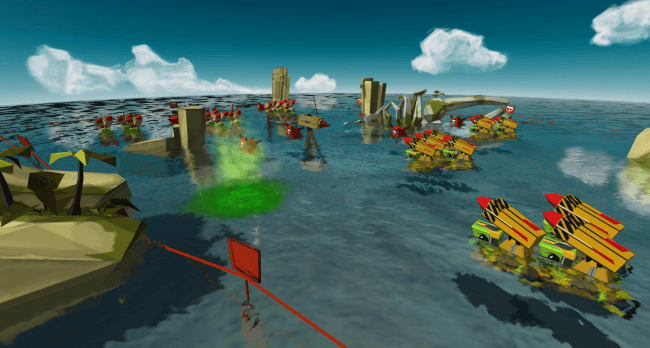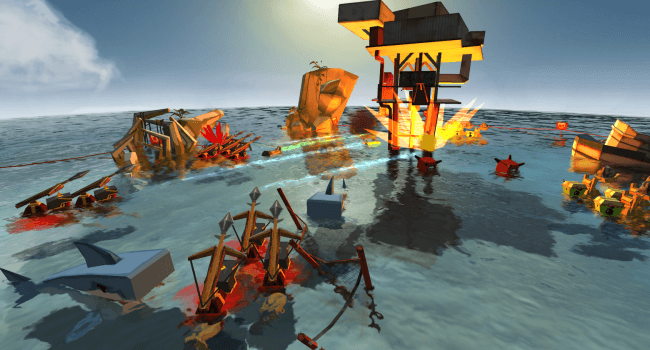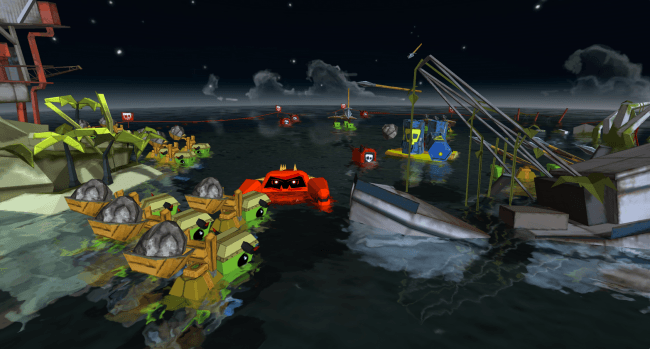- Wondering how to get Monopoly GO! free rolls? Well, you’ve come to the right place. In this guide, we provide you with a bunch of tips and tricks to get some free rolls for the hit new mobile game. We’ll …
Best Roblox Horror Games to Play Right Now – Updated Weekly
By Adele Wilson
Our Best Roblox Horror Games guide features the scariest and most creative experiences to play right now on the platform!The BEST Roblox Games of The Week – Games You Need To Play!
By Sho Roberts
Our feature shares our pick for the Best Roblox Games of the week! With our feature, we guarantee you'll find something new to play!All Grades in Type Soul – Each Race Explained
By Adele Wilson
Our All Grades in Type Soul guide lists every grade in the game for all races, including how to increase your grade quickly!
TurtleStrike Review
It seems like we’ve been hearing about the turn-based multiplayer battle game TurtleStrike for quite some time now, but I guess that’s to be about expected: the word around nature is that turtles are typically pretty slow. Just don’t tell them you heard it from me though, because I wouldn’t want to cross paths with one of these deadly rocket launcher-wielding creatures along their water-based battlefields anytime soon!

Prepare to be shell-shocked!
It seems like we’ve been hearing about the turn-based multiplayer battle game TurtleStrike for quite some time now, but I guess that’s to be about expected: the word around nature is that turtles are typically pretty slow. Just don’t tell them you heard it from me though, because I wouldn’t want to cross paths with one of these deadly rocket launcher-wielding creatures along their water-based battlefields anytime soon!
The object of TurtleStrike is simple: each player starts out with 10 turtles to their name, and whoever is able to eliminate every one of their opponent’s turtles first will be declared the winner. Turtles are divided into separate clusters, usually with about 3 or 4 turtles in each one, and move in unison within their own respective groups. The specific formations of these clusters can also be further customized by the player in the options menu, for an even deeper tactical approach.
At the beginning of each turn, both players will have a short 30-second window to plot their next moves on the battlefield. But what sets TurtleStrike apart from most other turn-based strategy games is that the moves of both you and your opponent will be executed at the exact same time. This results in a wonderfully smart matching of wits, as you’ll often need to predict what kinds of moves your opponent will make next, and adjust your own placements accordingly. Sometimes this works in your favor, as your opponent’s turtles swim exactly where you hoped that they would. But of course, sometimes you can also be horribly wrong, and launch a full-scale attack on one enemy cluster of turtles, only to watch them nonchalantly paddle away to safety just seconds before your artillery hits.
During each planning stage, you’ll have several different options to utilize your time. There are four main actions that make up the bulk of the strategy that’s employed in TurtleStrike: moving your turtles into position, firing your main attack weapon, launching a stealth torpedo, and placing a momentary shield around one or more of your clusters. And when the going gets tough, you’ll even have a selection of special attacks to use at your disposal, such as tactically placing a shark in the water, in hopes that he whips up some enemy turtle soup! All of the controls are incredibly simple to learn, and very intuitive to the touchscreen’s handling of inputs. For instance, firing your main weapon is as easy as drawing a line from your attacking turtle to your targeted prey, and making sure the line turns red to indicate a direct hit. Launching an underwater torpedo translates into drawing a snaking line across the water and sliding it underneath an unsuspecting cluster.
Given the highly intelligent nature of the gameplay, it’s a shame, then, that TurtleStrike suffers from a lack of gameplay options to really offer a much deeper experience beyond the simple exhibition match. Besides a brief tutorial against computer A.I. to teach you the basics, the game is strictly an online affair, and the only real option you have to get into a game is through selecting an automatic “Quick Match” pairing. Sure, you can team up with a few of your Facebook friends and participate in Tournaments with some awesome cash prizes, but these are still just ever-so-slight variants of the same basic Quick Match setup. It just would have been nice to see the same rules applied to other additional game modes, like a “Capture the Turtle Egg” competition. However, although you have zero control over these Quick Matches, the developer should still be commended for a pitch-perfect matchmaking system that teams you up with opponents of your same level and playing caliber.
Luckily, TurtleStrike certainly isn’t in need of alternative options when it comes to customization features. Winning matches and completing the tons of achievements and daily challenges will net you with pockets of eeGons, the game’s form of currency. eeGons let you purchase everything from new weapons like Plutonium Missiles and Tomahawks; to environmental obstacles like humpback whale remains to provide additional cover; to character skins that dress your turtles up like zombies or skeletons. The colorful 3D graphics are all extremely well done, with special attention paid to the boxy designs of the turtles themselves. The camera is also worthy of a special mention here as well, with an easy two-finger touch and drag scheme to switch the view into a number of advantageous tactical perspectives.
So even though TurtleStrike is perhaps a little too light on all the different ways that you can actually play the game, the engrossing and smart simultaneous gameplay, along with the many deep layers of customizable options, achievements, and unlockables more than make up for this hollow space in the game’s shell. With a wonderful presentation, and just the fact that the game features tiny little turtles with deadly rocket launchers on their shells, I think that TurtleStrike will definitely have gamers saying “I like turtles” for quite some time to come.

The good

The bad
More articles...
Monopoly GO! Free Rolls – Links For Free Dice
By Glen Fox
Wondering how to get Monopoly GO! free rolls? Well, you’ve come to the right place. In this guide, we provide you with a bunch of tips and tricks to get some free rolls for the hit new mobile game. We’ll …Best Roblox Horror Games to Play Right Now – Updated Weekly
By Adele Wilson
Our Best Roblox Horror Games guide features the scariest and most creative experiences to play right now on the platform!The BEST Roblox Games of The Week – Games You Need To Play!
By Sho Roberts
Our feature shares our pick for the Best Roblox Games of the week! With our feature, we guarantee you'll find something new to play!All Grades in Type Soul – Each Race Explained
By Adele Wilson
Our All Grades in Type Soul guide lists every grade in the game for all races, including how to increase your grade quickly!








 “
“ “
“